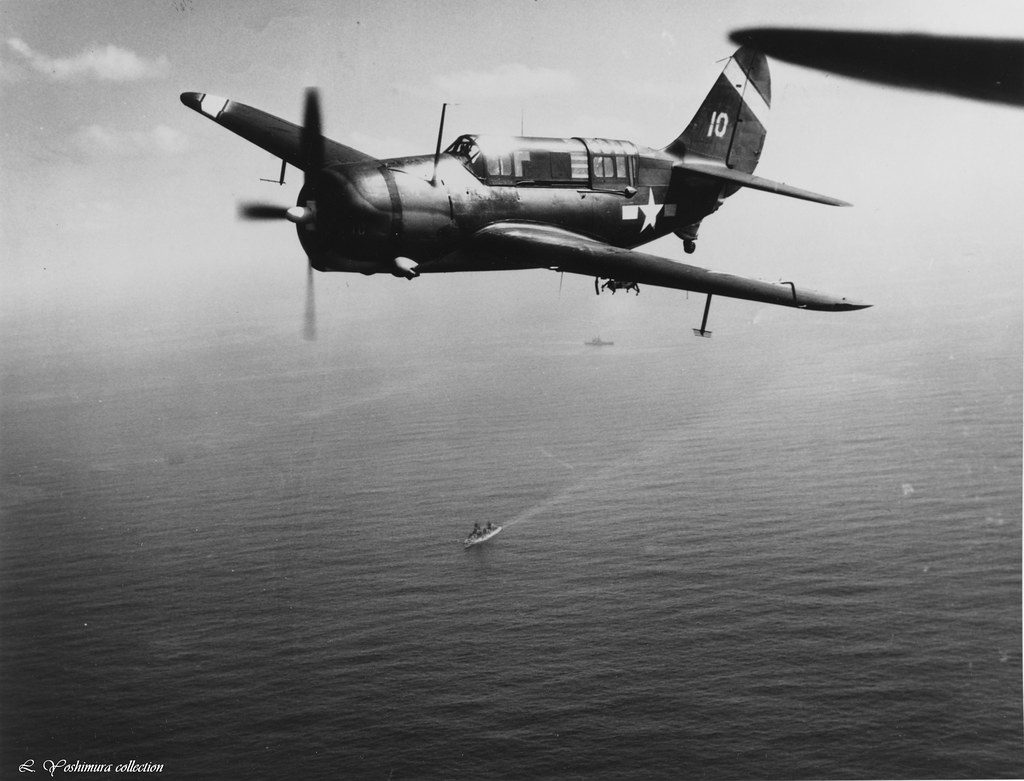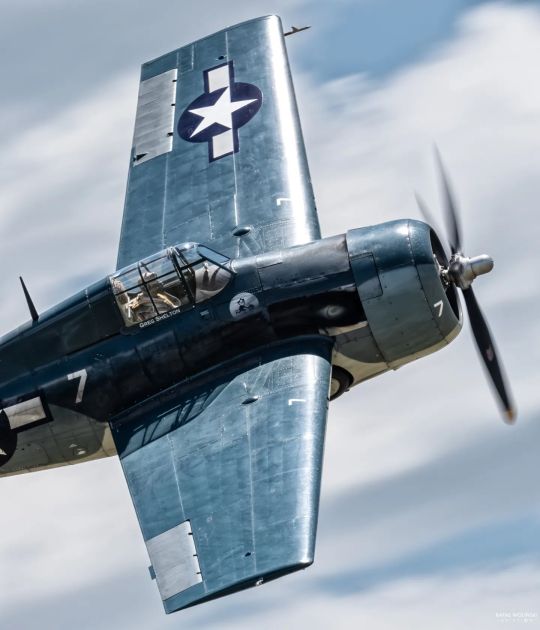#Curtiss SB2C Helldiver
Explore tagged Tumblr posts
Text

Curtiss SB2C Helldiver: The Formidable “Big-Tailed Beast”
384 notes
·
View notes
Text

SB2C Helldiver
@AcePilotAV via X
#curtiss sb2c helldiver#Curtiss Wright Aviation#dive bomber#aircraft#navy#aviation#us navy#carrier aviation#ww2
50 notes
·
View notes
Text
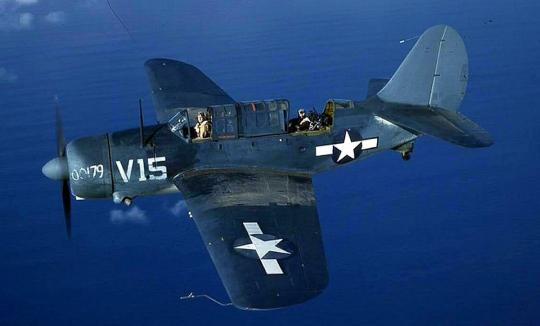
Bombardier en piqué Curtiss SB2C Helldiver – 1943-1945
©United States Navy
#WWII#marine américaine#us navy#aviation militaire#military aviation#bombardier#bomber#bombardier en piqué#dive bomber#curtiss sb2c helldiver#sb2c helldiver#helldiver#1943#1944#1945
127 notes
·
View notes
Text
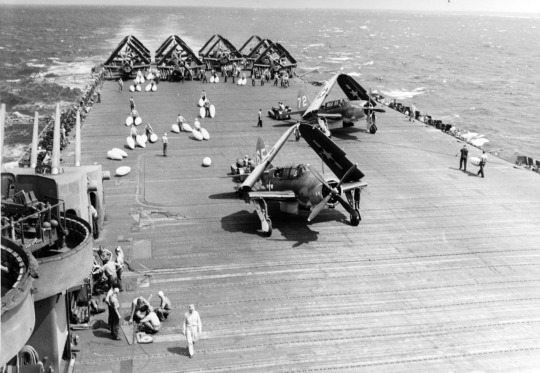
Loading drop tanks on Curtiss SB2C Helldivers aboard USS LEXINGTON (CV-16) before a search mission.
Photographed on October 25, 1944.
U.S. Naval History and Heritage Command: 80-G-284381
#USS Lexington (CV-16)#USS Lexington#Essex Class#Aircraft Carrier#Carrier#Warship#Ship#United States Navy#U.S. Navy#US Navy#USN#Navy#World War II#World War 2#WWII#WW2#WWII History#History#Military History#Battle of the Sibuyan Sea#Battle of Leyte Gulf#Tablas Strait#Philippines#Philippines campaign#Pacific Theater#October#1944#Curtiss SB2C Helldiver#Dive bomber#my post
88 notes
·
View notes
Photo

Sea Wolf with fangs of fire!
#ww2#wwii era#wwii history#wwii#curtiss helldiver#curtiss sb2c helldiver#u.s. navy#carrier aircraft#u.s. marine corps#naval aviators#oldsmobile#gm#general motors
98 notes
·
View notes
Video
Shutting Down for the Day by Jeff Hooten Via Flickr: The Commemorative Air Force's Curtiss SB2C Helldiver shuts down it's engine after a busy morning of historical flight experiences. _DSC3676 1
#Curtiss SB2C Helldiver#Dive-Bomber#Naval Aviation#CAF#CAF Gulf Coast Wing#Commemorative Air Force#radial engine#single-engine#WWII#Centennial Airport#KAPA#Wings Over the Rockies Exploration of Flight Museum#carrier aviation#Taildragger#tailhook#flickr
1 note
·
View note
Text



Naval Review of Fleets in Virginia, circa June 1957.
Photographed by Frank Scherschel for LIFE Magazine.
LIFE Magazine Archives: 113691409, 113691414, 113691413
#Vought F7U Cutlass#F7U#North American FJ-1 Fury#FJ-1#Vought V-173 Flying Pancake#Vought V-173#V-173#Grumman C-1 Trader#C-1#North American AJ Savage#North American A-2 Savage#AJ#A-2#Ryan FR Fireball#FR#Douglas BTD Destroyer#BTD#Curtiss SB2C Helldiver#Grumman F9F Panther#F9F#Douglas A-3 Skywarrior#A-3#Douglas F3D Skyknight#Douglas F-10 Skyknight#F-10#Grumman AF Guardian#AF#Grumman F6F Hellcat#F6F#North American T-6 Texan
24 notes
·
View notes
Text

1944 Helldiver giving a look at it's bomb bay during a pass at the 2016 Wings Over Houston Airshow
#Curtiss#SB2C-5#Helldiver#Dive bomber#WW2 aircraft#Warbird#vintage warbird#airshow photos#aviation#aviation photography
75 notes
·
View notes
Text

Curtiss SB2C Helldivers from the USS Hornet (CV-12) on a mission over Saipan. August, 1944. ➤ THE PACIFIC WAR [DOC]: https://youtu.be/hdAz_qjBT78 ➤HD IMAGE: https://dronescapes.video/Helldiver
#pacific war#Helldiver#aircraft#airplane#aviation#dronescapes#documentary#military#aviation history#ww2#wwii#youtube#Curtiss#SB2C#colorized#aviation photography#military aviation#usaf#carrier aviation#uss hornet#saipan#tropical island
29 notes
·
View notes
Video
WWII by Linh Yoshimura Via Flickr: Iwo Jima Operation, 1945 - Curtiss SB2C-3 Helldiver bomber from USS Hancock (CV-19) flies over two battleships of the invasion fleet, during strikes on Iwo Jima on 19 February 1945. US National Archives Photo.
19 notes
·
View notes
Text
WWII history...

On the hangar deck of USS Lexington (CV2) near Hawaii in 1941, before the start of WWII.
Douglas SBD Dauntless (nearest) & TBD Devastators from USN Scouting Sqn. No.2.
The Devastators were obsolete when the war began. They acquitted themselves well enough in the early months of 1942 but were savagely mauled at Midway, and remaining examples were withdrawn from service.
The Dauntless, nicknamed "slow but deadly", served with distinction in the early war years, especially at Midway and Guadalcanal. The Battle of the Philippine Sea in 1944 was the last major engagement for the SBD before being replaced by the Curtiss SB2C Helldiver.
Note the spare airframes stored in the overhead.
71 notes
·
View notes
Text

Curtiss SB2C Helldivers from the USS Hornet (CV-12) on a mission over Saipan. August, 1944
22 notes
·
View notes
Text
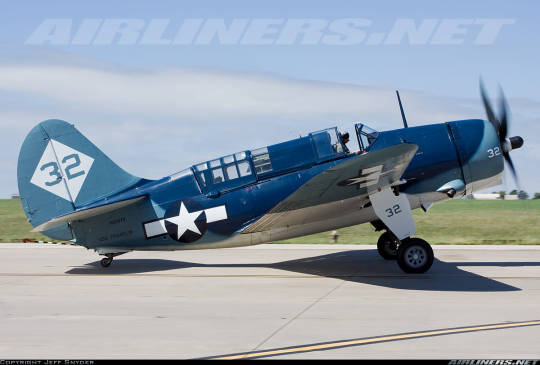
Curtiss SB2C-5 Helldiver
The Helldiver was developed to replace the Douglas SBD Dauntless. It was a much larger aircraft, able to operate from the latest aircraft carriers and carry a considerable array of armament. It featured an internal bomb bay that reduced drag when carrying heavy ordnance. Saddled with demanding requirements set forth by both the U.S. Marines and United States Army Air Forces, the manufacturer incorporated features of a "multi-role" aircraft into the design.
The Model XSB2C-1 prototype initially suffered development issues connected to its Wright R-2600 Twin Cyclone engine and three-bladed propeller; further concerns included structural weaknesses, poor handling, directional instability, and bad stall characteristics. In 1939, a student took a model of the new Curtiss XSB2C-1 to the MIT wind tunnel. Professor of Aeronautical Engineering Otto C. Koppen was quoted as saying, "if they build more than one of these, they are crazy". He was referring to controllability issues with the small vertical tail.
The first prototype made its maiden flight on 18 December 1940. It crashed on 8 February 1941 when its engine failed on approach, but Curtiss was asked to rebuild it. The fuselage was lengthened and a larger tail was fitted, while an autopilot was fitted to help the poor stability. The revised prototype flew again on 20 October 1941, but was destroyed when its wing failed during diving tests on 21 December 1941.
Large-scale production had already been ordered on 29 November 1940, but a large number of modifications were specified for the production model. Fin and rudder area were increased, fuel capacity was increased, self-sealing fuel tanks were added, and the fixed armament was doubled to four 0.50 in (12.7 mm) machine guns in the wings, compared with the prototype's two cowling guns. The SB2C-1 was built with larger fuel tanks, improving its range considerably.
The program suffered so many delays that the Grumman TBF Avenger entered service before the Helldiver, even though the Avenger had begun its development two years later. Nevertheless, production tempo accelerated with production at Columbus, Ohio and two Canadian factories: Fairchild Aircraft Ltd. (Canada), which produced 300 (under the designations XSBF-l, SBF-l, SBF-3, and SBF-4E), and Canadian Car and Foundry, which built 894 (designated SBW-l, SBW-3, SBW-4, SBW-4E, and SBW-5), these models being respectively equivalent to their Curtiss-built counterparts. A total of 7,140 SB2Cs and equivalent models were produced in World War II.
Initially poor handling characteristics and late modifications caused lengthy delays to production and deployment, to the extent that it was investigated by the Truman Committee, which turned in a scathing report. This contributed to the decline of Curtiss as a company. Neither pilots nor aircraft carrier skippers seemed to like it. Nevertheless, the type was faster than the Dauntless, and by the end of the Pacific War, the Helldiver had become the main dive bomber and attack aircraft on USN carriers.
By the time a land-based variant, known as the A-25 Shrike, became available in late 1943, the Western Allied air forces had abandoned dedicated dive-bombers. A majority of A-25s delivered to the US Army Air Forces were transferred to the US Marine Corps, which used the type only in one side campaign and non-combat roles. The British Royal Navy and the Royal Australian Air Force also cancelled substantial orders, retaining only a few aircraft for research purposes.
Nicknames for the aircraft included "Big-Tailed Beast" or just "Beast", "Two-Cee", and "Son-of-a-Bitch 2nd Class"; the latter nickname was derived from the name SB2C and the aircraft's reputation for having difficult handling characteristics.
Photo-Description:
Aircraft
Commemorative Air Force
Curtiss SB2C-5 Helldiver
Reg.: N92879
Code: 32
Location & Date
Wichita - McConnell AFB (IAB / KIAB)
Kansas, USA - September 25, 2010
Caption:
Photographer:
J Snyder (Oklahoma, USA)
18 notes
·
View notes

